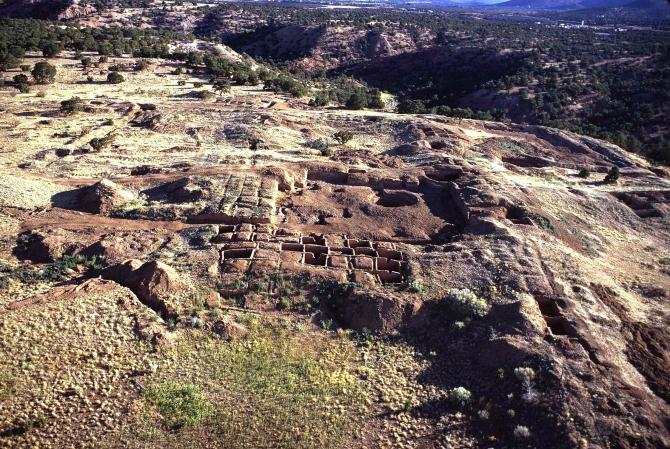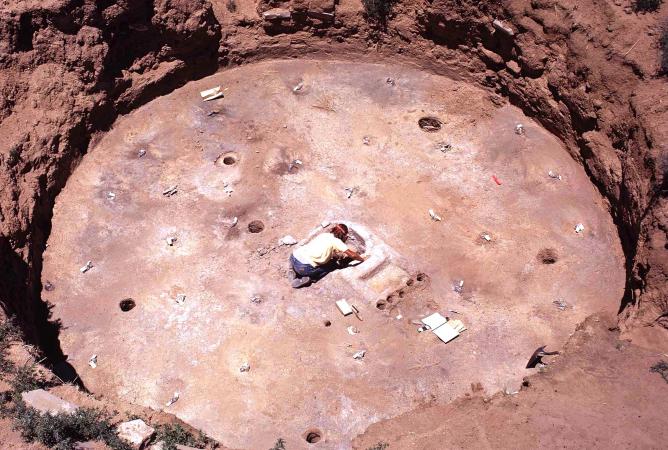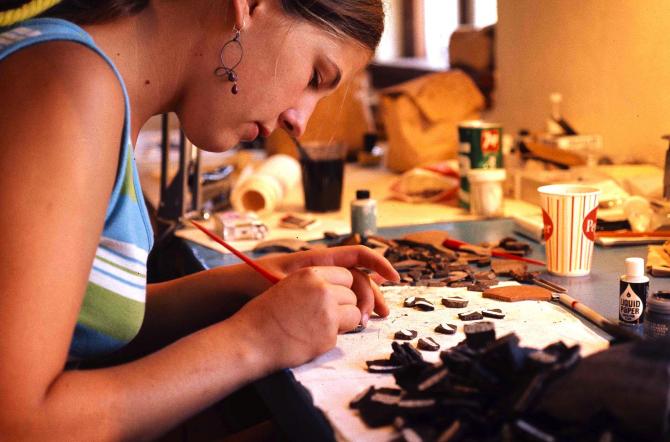About 1300 C.E., a small pueblo located minutes south of present day Santa Fe, New Mexico, rapidly transformed from a 100-room hamlet to a 1000-room pueblo boomtown. Extensive archaeological research at Arroyo Hondo Pueblo, directed by Douglas Schwartz, disclosed wide-ranging details about its origin, rapid growth, the inhabitants’ way of life, pathology, spirituality, and its period of severe climate change and regional violence. After 125 years, these forces intertwined to cause the town’s demise.
In 2016 the School for Advanced Research (SAR) is published website developed by Douglas Schwartz that presents the comprehensive results of 45 years of research on the Arroyo Hondo Pueblo archaeological project. The Archaeological Conservancy, owner and caretaker of the protected Pueblo site shared in the announcement of this project. The website includes the research results, publications, bibliography, archaeological summary, aerial and other photographs, project chronology, and a series of current essays setting the project in the context of the most recent research. The material is presented at www.arroyohondo.org in an accessible format for both scholars and the general public and includes an artist rendering of what the pueblo may have looked like at its climax.
“The Arroyo Hondo Pueblo website highlights the emergence of a new architectural style that set in motion the rise of the Classic Rio Grande pueblo pattern. It presents the intricate details of Pueblo life during the 14th century,” says Douglas W. Schwartz, the project’s principal investigator, and president emeritus of SAR.
The pueblo perched on the edge of the Arroyo Hondo canyon south of Santa Fe was determined to be an ideal location to obtain a more detailed understanding of northern Rio Grande history. In the late 1960s Douglas Schwartz, who had recently completed four field seasons of excavations in the Grand Canyon and had just become president of the School for Advanced Research obtained support for the project from the National Science Foundation and the National Geographic Society.
Resulting from the Arroyo Hondo Pueblo project were several Master’s theses and doctoral dissertations as well as nine published monographs covering various aspects of the research. In 2006, based on the Project’s research, the Arroyo Hondo Pueblo site was listed on the National Register of Historic Places of the United States Department of the Interior.
The 20-acre preserve surrounding the Arroyo Hondo Pueblo physical site was transferred by SAR to the Archaeological Conservancy in 2003 and is not open to the public except by permission.
About Douglas Schwartz
Douglas W. Schwartz received his B.A. from the University of Kentucky in 1950 and went on to complete his Ph.D. in anthropology at Yale University in 1955. He has received numerous honors, including a Litt.D. from the University of New Mexico in 1981, and another Litt.D. from the University of Kentucky in 1989. He received the Franz Boas Award for Exemplary Service to Anthropology from the American Anthropological Association and the Distinguished Service Award from the Society of American Archeology. Recently he was awarded a Luminary by the New Mexico Community Foundation.
Dr. Schwartz was president of the School for Advanced Research from 1967–2001. In 2007 he was honored with a bronze plaque in the courtyard of the Museum of Art in Santa Fe. In addition to being Senior Scholar at SAR, he is a board member of the Witter Bynner Foundation for Poetry.
About the School for Advanced Research (SAR)
The School for Advanced Research has supported innovative social science research and Native American artistic creativity for more than a century. Since offering fellowships in 1972, They have funded the work of more than 350 SAR scholars and artists, among whose ranks are six MacArthur Fellows and eighteen Guggenheim Fellows. In Santa Fe the Public is invited for insightful lectures or a tour of the School’s historic campus. You can follow the work of resident scholars and Native American artists on their website, www.sarsf.org, Facebook and Twitter.
About The Archaeological Conservancy
The Archaeological Conservancy is the only national, nonprofit organization that identifies, acquires, and preserves the most significant archaeological sites in the United States. Since its beginning in 1980, the Conservancy has preserved almost 600 sites across the nation, ranging in age from the earliest habitation sites in North America to a 19th-century frontier army post. We are building a national system of archaeological preserves to ensure the survival of our irreplaceable cultural heritage.







